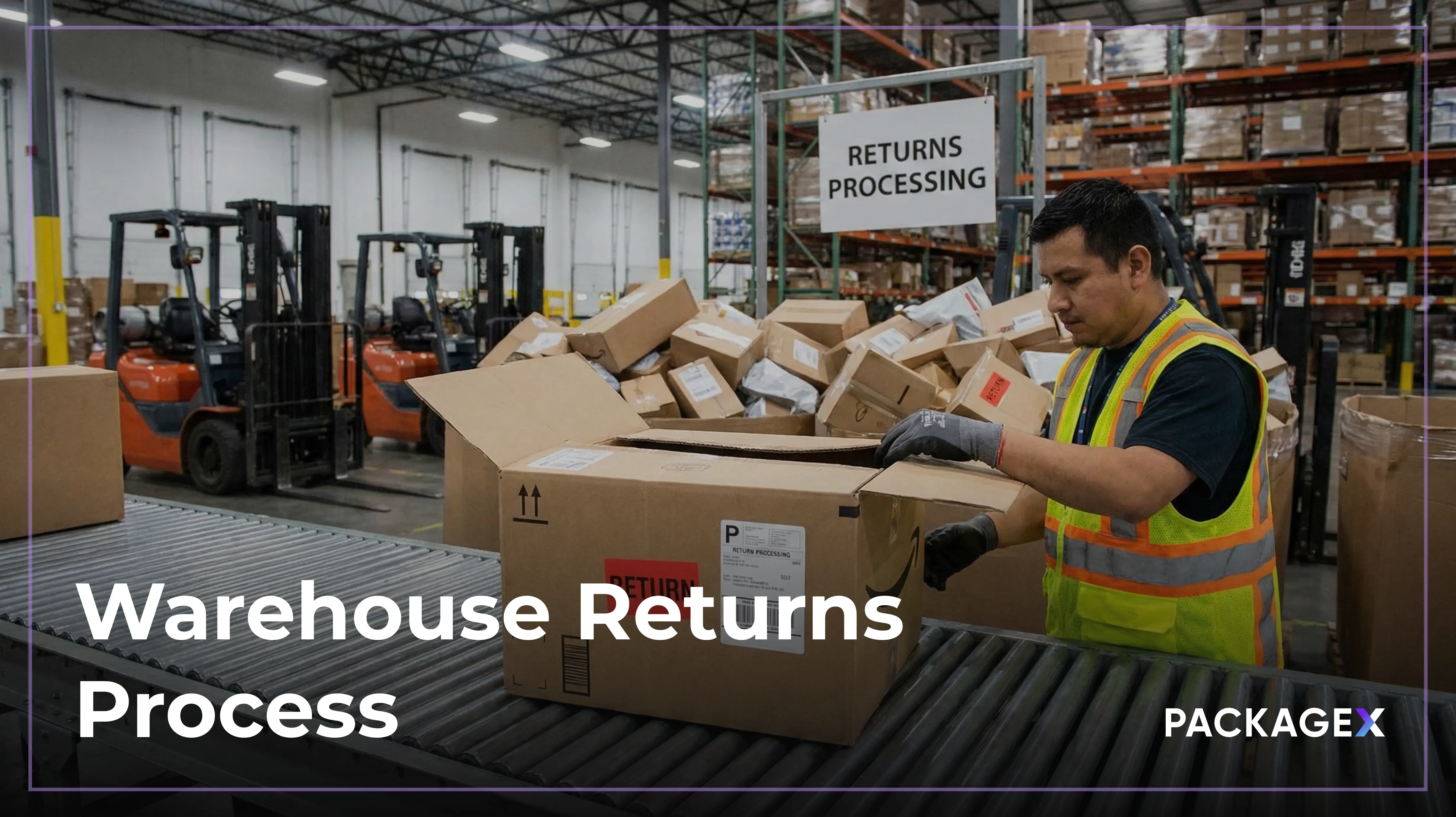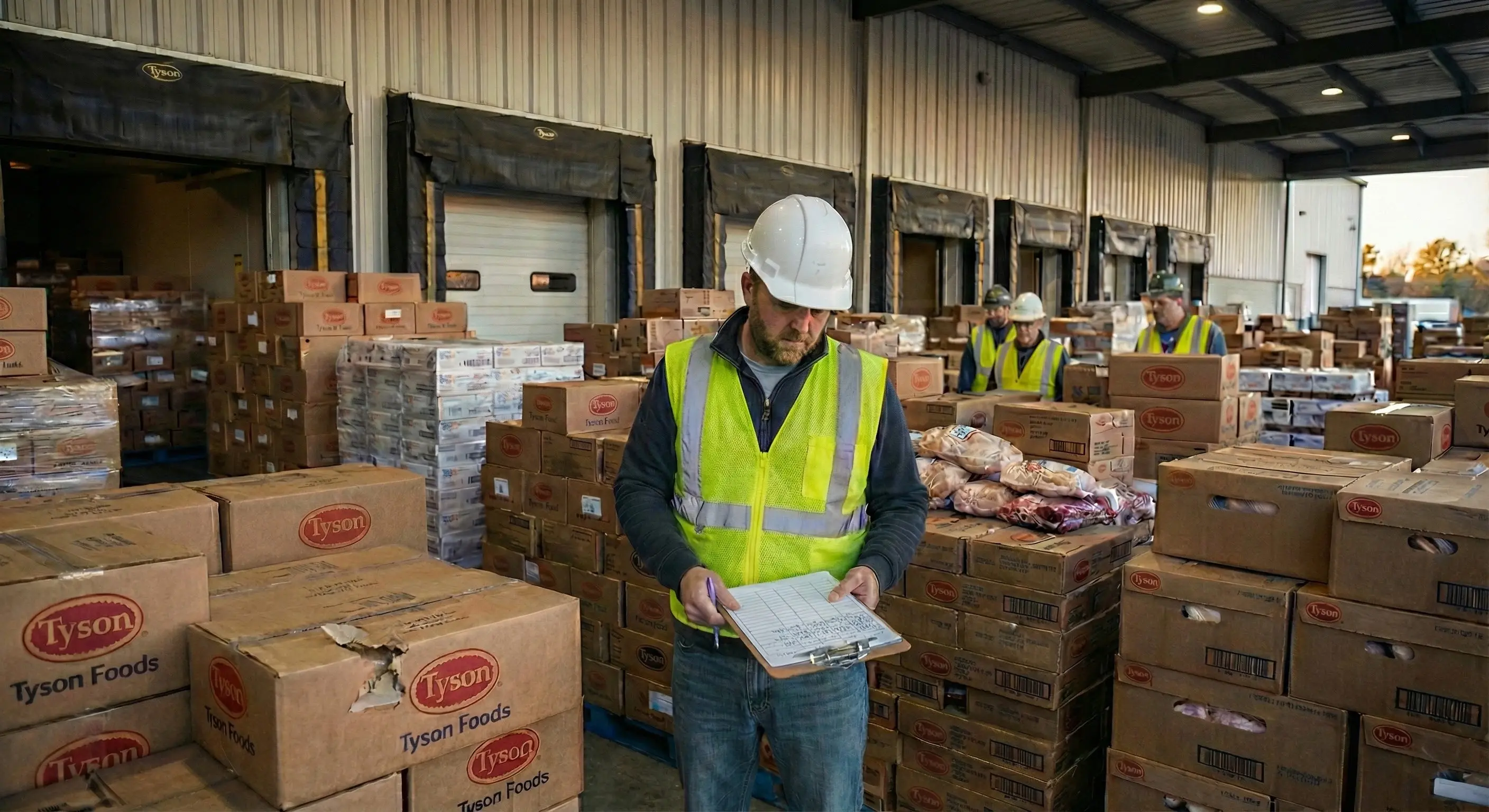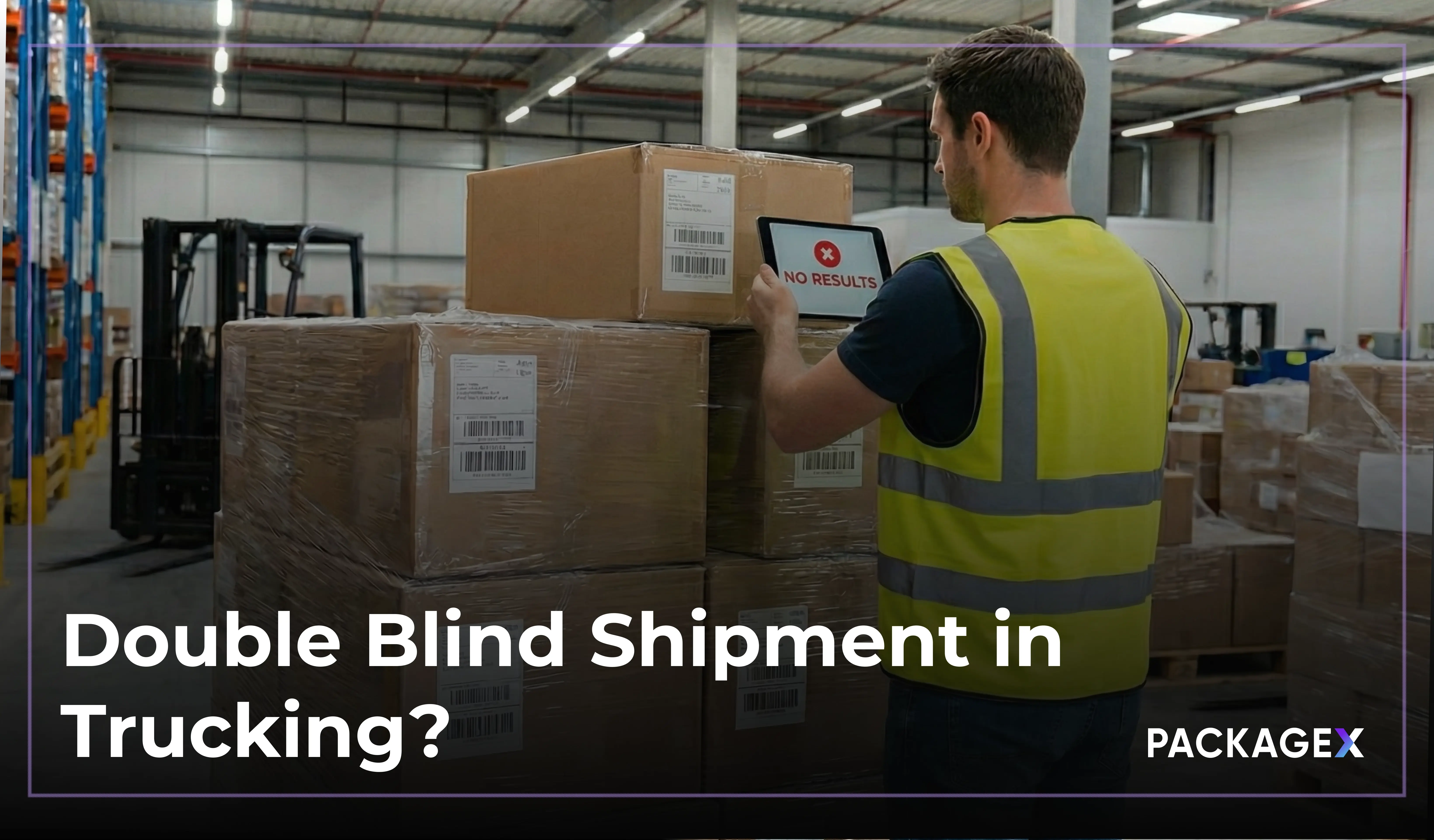Modern supply chains are under constant pressure to operate faster, leaner, and more accurately. As ecommerce continues to expand, businesses must adapt to rising customer expectations and the demand for seamless delivery experiences.
Traditional warehousing models are mainly reliant on manual processes that are no longer sufficient. Delays, inventory inaccuracies, and inefficiencies can impact performance across the entire order fulfillment network.
In response, organizations are turning to smart warehouse solutions. These advanced systems integrate automation, data analytics, and real-time visibility to improve speed and scalability.
The global warehouse automation market is projected to grow at a CAGR of 15.9% from 2025 to 2034, highlighting a transformative shift in how fulfillment is managed.
For companies, smart warehouses can offer a competitive edge in ecommerce product fulfillment.
In this blog, we’ll explore what smart warehousing is, the technologies behind it, and how it’s reshaping the future of fulfillment.
What Is a Smart Warehouse?
A smart warehouse is a technology-driven facility that uses automation, data analytics, and integrated systems to streamline inventory management and order fulfillment. These warehouses improve efficiency by reducing manual labor and increasing accuracy through connected tools and real-time insights.
Unlike traditional warehouses, which rely heavily on manual processes, smart warehouses often include a warehouse management system (WMS), barcode scanners, and automated sorting systems. They help businesses move products faster, reduce costs, and improve customer satisfaction.
This evolution supports the growing demands of ecommerce and global logistics. It also strengthens the role of third-party logistics (3PL) providers, who integrate smart warehouse systems to deliver faster and more reliable services.
Core Technologies of Smart Warehousing
Smart warehouse technology is reshaping how modern logistics operate. These tools improve speed, accuracy, and control across the supply chain. Here's a look at the essential tech stack behind today’s smart warehouse systems:
- IoT (Internet of Things):
IoT sensors monitor inventory in real time. They help track stock levels, temperature, and asset location. This enables faster, data-driven decisions. - RFID (Radio-Frequency Identification):
RFID tags and readers simplify item tracking. Unlike barcodes, RFID doesn't need direct scanning. It boosts efficiency and reduces theft or loss. - AI & Machine Learning:
AI helps forecast demand by analyzing trends and behaviors. ML algorithms adapt over time, improving order accuracy and reducing stockouts. It’s a must-have for smart inventory management. - Warehouse Management System (WMS):
A modern WMS offers real-time inventory control. It streamlines receiving, picking, and shipping. Integrated with cloud systems, it provides access from anywhere. - Automation & Robotics:
Autonomous mobile robots (AMRs) handle repetitive tasks like picking and moving. This reduces labor costs and improves warehouse flow. - Cloud-Based Integration:
Cloud systems unify data across platforms. They enhance visibility and speed up ecommerce fulfillment.
These technologies make order fulfillment more efficient. For businesses scaling quickly, smart warehouse systems offer the agility and precision that modern ecommerce demands.
Smart Warehousing vs. Traditional Warehousing
As supply chains evolve, many businesses are re-evaluating their warehouse operations. A smart warehouse management system offers a clear advantage over traditional methods, especially for those relying on advanced 3PL logistics services.
Below is a structured comparison:
Traditional operations often face challenges with visibility, speed, and scalability. A smart warehouse system addresses these gaps, offering integrated solutions for 3rd party logistics companies seeking to improve performance.
Understanding what a third-party logistics provider needs from warehouse infrastructure makes smart warehousing a strategic advantage in today’s competitive logistics operations.
Benefits of Smart Warehousing
Smart warehouse solutions are changing how companies manage inventory, fulfill orders, and scale operations.
Here are five key benefits driving their adoption:
1. More Accurate Order Fulfillment
Automated systems reduce delays and mistakes. Orders are pick and packed, and shipped with greater precision, improving customer satisfaction.
2. Real-Time Inventory Insights
Smart warehouse management systems offer live data. Teams know exactly what’s in stock, what’s low, and what’s incoming. This cuts down on overstocking and backorders.
3. Cost Efficiency Across Operations
Reducing waste, minimizing errors, and lowering return rates all save money. Smart systems also reduce manual tasks, streamlining workflows.
4. Labor Optimization
Robotics and automation ease repetitive labor. Workers focus on high-value tasks. This balance boosts both speed and morale.
5. Scalability for Ecommerce 3PLs
As ecommerce grows, so does demand. Smart systems support fast growth without any issues. That’s why 3PL experience matters in this space.
Challenges in Implementing Smart Warehouse Solutions
Transitioning to a smart warehouse system comes with its own set of challenges. Here’s what to expect, and how to manage it.
1. Upfront Investment
Cost is one of the first barriers. Smart systems, automation tools, and sensors require capital. For many businesses, especially smaller ones, this can feel like a major leap. But over time, these tools can improve accuracy and reduce waste, leading to long-term gains.
2. Workforce Training
Employees may need to learn new systems and workflows. Adopting smart warehouse tools often changes how day-to-day tasks are done. Without proper training, there’s a risk of slow adoption or errors. Investing in support and onboarding is key.
3. System Integration
Smart warehouse management tools don’t work in isolation. They need to connect with ecommerce platforms, WMS software, and other tools already in place. A skilled third-party logistics company can help bridge these systems for smoother operations.
4. Data Security and Compatibility
Smart warehouses rely on data. That means protecting it is essential. Compatibility with existing systems and blockchain technology measures must be in place. A trusted third-party logistics provider can offer both the infrastructure and support to handle this.
How to Transition to a Smart Warehouse?
Moving to a smart warehouse is a simple process. Here's a simple step-by-step roadmap:
1. Audit Your Current Operations
Start by assessing workflows, tech gaps, and fulfillment delays. Identify what’s slowing you down.
2. Set Clear Goals
Define what success looks like: faster picking, better inventory control, or smoother 3PL logistics services.
3. Choose a 3PL Provider
Partner with a 3PL provider that understands automation, integrations, and smart warehouse solutions. Look for real-time inventory data visibility and proven experience.
4. Evaluate Your Tech Stack
Check if your systems can support smart tools like WMS, IoT, or AI. Upgrade what’s outdated.
5. Roll Out in Phases
Start small. Test and refine before scaling across all operations.
6. Track KPIs Consistently
Measure order accuracy, lead times, and storage efficiency. Adjust based on data.
Working with the right partner, one that knows what a 3PL logistics company should makes all the difference.
The Future of Smart Warehousing
The future of smart warehousing is efficient, connected, and data-driven. As predictive automation continues to advance, warehouse systems will operate based on real-time data, improving speed and decision-making accuracy. Autonomous technologies will handle core tasks such as picking, packing, and material movement with minimal human involvement.
Sustainability will become a key focus. This includes energy-efficient infrastructure, optimized space utilization, and reduced inventory waste.
End-to-end logistics integration will also be essential. Smart warehouse technology will connect seamlessly with transportation, demand forecasting, and fulfillment systems to create a unified logistics environment.
As companies grow, many will turn to 3PL fulfillment companies to support this shift. Compared to 4PL models, 3PLs maintain greater operational control while still delivering scalable and agile solutions.
Why Choose PackageX for Smart Warehouse Solutions?
PackageX gives warehouse and fulfillment teams the tools they need to operate smarter, faster, and with greater accuracy. As a modern third-party logistics company, we combine smart automation with real-time visibility, making your logistics operations easier to manage and easier to scale.
From order tracking to inventory control, our platform simplifies fulfillment across every smart warehouse location.
Here’s how Package X helps:
- Real-time inventory visibility through one smart warehouse system.
- Fast, accurate order fulfillment powered by automation.
- Seamless WMS integrations with your existing workflows.
- Built-in flexibility for ecommerce brands and multi-location operations.
- Trusted support from a seasoned 3PL logistics provider with industry experience.
Get a demo and see how Package X can help transform your warehouse into a smart logistics hub.
FAQs
What are the three types of warehouses?
The three main types of warehouses are public warehouses, private warehouses, and smart warehouses. Public and private warehouses serve traditional storage needs, while smart warehouses use automation, IoT, and data-driven systems to optimize fulfillment.
What are the advantages of smart warehousing?
A smart warehouse improves order accuracy, inventory visibility, and operational efficiency through advanced technologies like RFID, AI, and robotics. These systems reduce manual errors and enable faster ecommerce fulfillment, making them ideal for modern 3PL logistics services.
What is a smart logistics system?
A smart logistics system integrates AI, smart warehouse technology, and data analytics to automate supply chain operations. It enables real-time tracking, predictive decision-making, and seamless coordination between warehouses, carriers, and customers.




